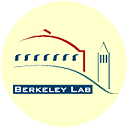|
BERKELEY, CA—James Sethian, head of the Mathematics
Group at the U.S. Department of Energy's Lawrence Berkeley National Laboratory
and a professor of mathematics at the University of California at Berkeley,
has been awarded the Norbert Wiener Prize in Applied Mathematics by the
American Mathematical Society (AMS) and the Society for Industrial and
Applied Mathematics (SIAM).
|
 |
|
| The level set method developed by James Sethian
represents a front propagating in n dimensions as a level set of an
object in (n + 1) dimensions, allowing curvatures and normals to be
easily evaluated and topological changes to occur in a natural manner. |
|
The prize, which was presented on January 8 at the joint AMS-SIAM meeting
in Phoenix, is awarded "for an outstanding contribution to applied
mathematics in the highest and broadest sense." Sethian's award marks
the eighth time the Norbert Wiener Prize has been awarded since 1970.
The prize was last awarded in 2000, when one of the two recipients was
Alexandre Chorin, a colleague of Sethian's who also has a joint appointment
in Berkeley Lab's Mathematics Group and UC Berkeley's Math Department.
"This recognition by the nation's two leading mathematical societies
is a powerful testimonial to the quality and influence of James's work,"
said Horst Simon, director of the Computational Research Division, where
Sethian's group resides. "Applied mathematics is at the heart of
our computational science program, and the research by James and his group
members helps advance science at Berkeley Lab and at universities and
national labs across the country and around the world."
According to information distributed at the AMS-SIAM meeting awards ceremony,
Sethian was honored "for his seminal work on the computer representation
of the motion of curves, surfaces, interfaces, and wave fronts, and for
his brilliant applications of mathematical and computational ideas to
problems in science and engineering."
His work has influenced fields as diverse as medical imaging, seismic
research by the petroleum industry, and the manufacture of computer chips
and desktop printers. AMS and SIAM, noting that "Sethian's work is
a shining example of what applied mathematics can accomplish to benefit
science as a whole," provided the following descriptions of the work
and its importance:
A particularly noteworthy aspect of Sethian's work is that he pursues
his ideas from a first formulation of a mathematical model all the way
to concrete applications in national laboratory and industrial settings;
his algorithms are currently distributed in widely available packages.
. . .
Sethian's earliest work included an analysis of the motion of flame
fronts and of the singularities they develop; he found important new
links between the motion of the fronts and partial differential equations.
These connections made possible the development of advanced methods
to describe front propagation through the solution of regularized equations
on fixed grids.
Sethian (with S. Osher) extended this work through an implicit formulation,
resulting in a methodology that has come to be known as the 'level set
method,' because it represents a front propagating in n dimensions as
a level set of an object in (n + 1) dimensions. Next, Sethian tamed
the cost of working in higher dimensions by reducing the problem back
down to its original dimensionality. This set of ideas makes possible
the solution of practical problems of increasing importance and sophistication
and constitutes a major mathematical development as well as an exceptionally
useful computational tool with numerous applications. (Sethian is also
the author of a book entitled Level Set Methods published by
Cambridge University Press.)
Among the practical problems solved by Sethian are: the tracking of
interfaces and drops in fluid mechanics with applications to inkjet
design for high-speed printers; the analysis of crystal growth (with
J. Strain); and the design of optimal structures under loads (with A.
Wiegmann).
Sethian's mathematical description of etching and deposition in the
manufacture of computer chips has illuminated processes such as ion
milling, visibility, resputter, and material-dependent etch rates; the
resulting algorithms are now an indispensable part of industrial semiconductor
fabrication simulations throughout the world.
His models of implicit surface motion together with fast Eikonal solvers
are standard fare in medical and biomedical shape extraction . . . and
they are used in hospital electron-beam scanners to quantify cardiac
motion and efficiency.
Recently, Sethian (with S. Fomel) developed efficient numerical methods
for simulating multiple-arrival wavefront propagation by solving Liouville-type
equations; this work has direct applications in seismic imaging and
geophysical inverse problems and has already been put to use by the
petroleum industry.
The Berkeley Lab is a U.S. Department of Energy national laboratory
located in Berkeley, California. It conducts unclassified scientific research
and is managed by the University of California.
Additional information
- More about James Sethian's
work
- More about Berkeley Lab's Computational
Research Division, which creates computational tools and techniques
that enable scientific breakthroughs by conducting applied research
and development in computer science, computational science, and applied
mathematics.
|

